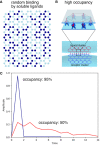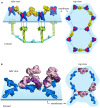The benefits of clustering in TNF receptor superfamily signaling
- PMID: 37662920
- PMCID: PMC10469783
- DOI: 10.3389/fimmu.2023.1225704
The benefits of clustering in TNF receptor superfamily signaling
Abstract
The tumor necrosis factor (TNF) receptor superfamily is a structurally and functionally related group of cell surface receptors that play crucial roles in various cellular processes, including apoptosis, cell survival, and immune regulation. This review paper synthesizes key findings from recent studies, highlighting the importance of clustering in TNF receptor superfamily signaling. We discuss the underlying molecular mechanisms of signaling, the functional consequences of receptor clustering, and potential therapeutic implications of targeting surface structures of receptor complexes.
Keywords: TNF receptor superfamily (TNFRSF); TNF signaling; TNFR agonism and antagonism; receptor clustering; signal amplification.
Copyright © 2023 Vanamee and Faustman.
Conflict of interest statement
The authors declare that the research was conducted in the absence of any commercial or financial relationships that could be construed as a potential conflict of interest.
Figures





References
-
- The PyMOL molecular graphics system, version 2.5, Schrödinger, LLC.
Publication types
MeSH terms
Substances
LinkOut - more resources
Full Text Sources

